Cultivation of Organic Cotton:
Because organic cotton production warrants cultivation without agrochemicals, there is a need for careful selection of components of the farming system to form a package appropriate to the local resources, the agro-climatic conditions, and the agro-climatic conditions as socioeconomic conditions of the area.
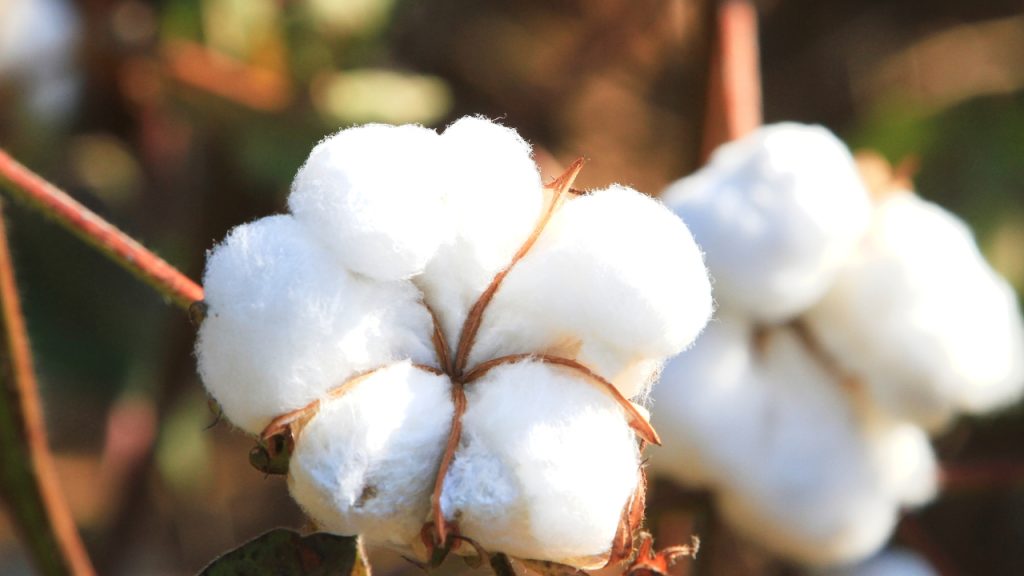
Throughout this article, I will explain step-by-step how to cultivate organic cotton in a short and concise manner.
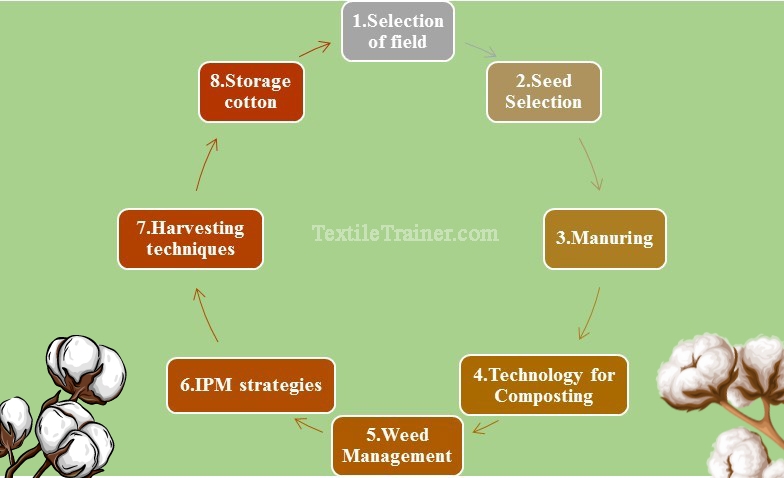
1. Site Selection & Varietal selection:
In fields with a high degree of soil erosion and are heavily infested with perennial weeds, organic farming should not be considered. Farming organically is not farming by neglect or armchair cultivation, so fertile soil should be improved through organic methods before opting for this type of cultivation.
Some varieties produce high yields and are well suited to chemical inputs, but these varieties may be suitable for something other than organic farming. There is a need instead for types that can provide acceptable farming, especially in the early stages of conversion, especially those that are hardy and capable of giving satisfactory yields. It is possible to prefer varieties that are jassid-tolerant over those that are susceptible to the disease. A variety that matures early is less exhausting and will allow the crop to avoid heavy bollworm damage if it is early in development.
2. Seed rate and sowing:
To certify fiber, acid-delinted seeds cannot be used according to international norms (e.g., IFOAM). To avoid seed-borne pathogenic infections and to achieve optimum plant stand, farmers who pursue organic farming can use acid-delivered seeds to reduce the cost of cultivation and increase profitability. However, it is necessary to use a higher seed rate if fuzzy seeds are used. It is estimated that 85-90 thousand plants/ha can be produced by planting about 25 kg/ha of seeds at 75×15 cm spacing. Between two rows of cotton, one row of fodder cowpea (Vigna unguiculata) should be planted. A plough could be used to plough this crop down and bury it in the soil just before it blooms.
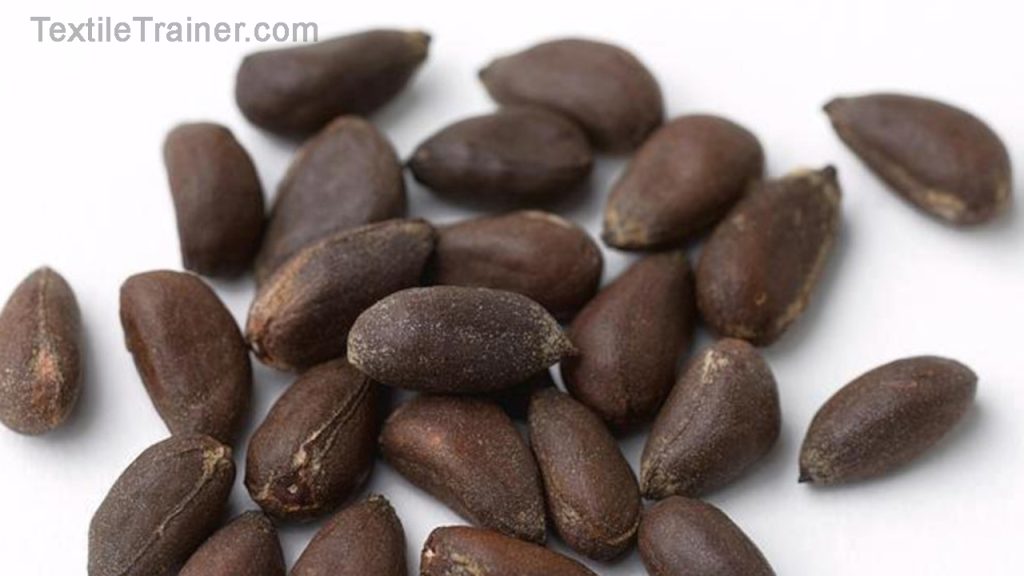
3. Manuring:
To achieve economic production, soil fertility must be maintained and gradually improved. Organic cotton production requires improving and maintaining organic matter in the soil to increase physical parameters, improve soil structure, and supply nutrients. Because of the limited availability of FYM, a combination of sources with different biological properties should be used to meet cotton crop nutrient requirements. Maintaining soil fertility involves organic manures (FYM, compost, vermicompost), in situ green manuring, cowpea, biofertilizers, and fertility-restoring crop rotations.
a. Farm yard manuring (FYM):
Before preparing the soil for tillage, FYM at a rate of 15 tonnes per hectare must be added and mixed thoroughly. An FYM that has been well decomposed should be able to be composted with the help of organisms related to the composting process, such as Trichoderma viride. It may be possible to gradually reduce the 5-10 t/ha rate over a few years once the farm yield stabilizes.
b. Fodder cowpea:
In situ green manuring with fodder cowpea and its burying at 40 days after sowing [DAS] ensures a steady N supply during the grand-growth phase and flowering period, when the crop’s demand peaks. Soil microbial activity is accelerated, weed growth is reduced, and natural enemies are built up more quickly. 2.5% N provides about 400-500 kg of dry matter per hectare and contributes 10-12 kg N per hectare during the squaring process. Additionally, it smothers weeds, controls soil erosion, and nurtures natural enemies of cotton pests.
c. Dhaincha (Sesbania aculeata):
Cotton fields can be planted with a dense stand of this legume at a width of 2 m, and its lopping can be cut and spread between cotton rows at 65-70 DAS. In the early stages of boll development, the leaves of this plant quickly decompose and serve as a source of nitrogen, while the stalks prevent soil moisture loss by acting as temporary mulch.
d. Vermicompost:
To the furrow lines where sowing is done, vermicompost should be added at 1-2 tons per hectare to complement FYM. Although its nutrient composition varies with the vermicomposted substrate, it generally contains several diverse microbes that support plant growth. In addition, it offers good prospects for recycling farm waste.
e. Biofertilisers:
A seed inoculation of Azatobactor or Azospirillum at 200 grams per seed is recommended for sowing one acre.
4. Technology for Composting:
a. Vermicompost:
A sure method of increasing soil organic content is using green biomass and farmyard manure. As things stand, these requirements cannot be fully met under the current circumstances. Farm wastes and organic residues are burned in large quantities. Using earthworms and fungi that are habituated to such conversion is an efficient way of recycling farm wastes and organic residues into compost. Eisenia foetida is a promising Indian species that converts organic wastes into vermicompost in about one month. It cannot compost plastic, however.
Vermicomposting using any of the above species can be a very promising endeavor in rural areas. In addition to meeting one’s own farm’s compost needs, it is desirable to incorporate this strategy into organic farming. Here are a few details about vermicomposting.
In raised beds 15-25 cm high, vermicompost can be made. Composting wastes can vary in length and width based on the amount available. It is ideal to have beds that are 6 x 2 meters. Beds should be raised at the center and sloped towards the sides (to facilitate effective drainage), ideally under shade. Covering the pits is recommended since earthworms do not enjoy the light. The composting process is also sped up by darkness.
Wheat/soybean straw is used as a soft bedding material in the first layer. After this, a thin layer of cow dung slurry should be applied. A culture of earthworms is then added at a rate of 1 kilogram per meter of bed length (2 meters wide). Using earthworm cocoons or starter inoculant worms from vermicompost is also possible. Degradable materials such as weeds, leaves, farm wastes, household wastes, etc., can be continuously added on top. Keep the beds moist but never wet by sprinkling water periodically. Compost would take 40-50 days to mature under ideal moisture and temperature conditions (27-33°C). Depending on the substrate and composting conditions, earthworm castings contain approximately 2.0-2.5% N, 2.5-2.9 percent P2O5, and 1.2- 1.4% K2O. In vermi castings, organism excreta also contains more N than what they consume.
b. Composting of cotton stalks through Trichoderma viride:
Cotton stalks are burned as fuel after seed cotton is picked. Through the use of beneficial fungi such as Trichoderma viride, residues from other crops and weeds can be effectively used to prepare compost. It is briefly described how CICR, Nagpur developed the technique.
Dry cotton stalks from two hectares are placed in a pit 10 x 2 x 1m in size and are interspersed with other soft farm waste, including sorghum stubble, linseed straw, soybean pod-haulms (to fill in the gaps between cotton stalks), and cow dung (to provide a soft substrate for initial fungus multiplication). We sprinkled 2.5 kg of T.viride wettable powder in 60 liters of water with 15 grams of yeast and 50 grams of jaggery in each experiment layer. A foot-thick layer of sun hemp stalks is finally placed over the pit to prevent water loss. It is necessary to water the hole periodically and turn the top layer at least once during decomposition to keep the pit moist.
Within four months, most of the cotton stalks are converted into compost, leaving 20% as black, brittle, semi-decomposed stalks. The compost is comparable to vermicompost that has decomposed well. In addition, nutrient recycling could also serve as an antagonistic fungus against specific soil-borne pathogens, such as Fusarium spp. and Rhizoctonia spp. etc.
5. Weed Management:
Fields that are not infested with perennial weeds, such as Cyperus spp. The first two are Motha (Motha) and Cyanodon dactylon (Doob). Using (Kans) for organic farming is preferable because they are difficult to control. Nonetheless, if such weeds occur in patches, their underground propagatory structures (stolons, rhizomes, etc.) must be exposed by summer cultivation and removed manually. It is possible to use mechanical or manual weeding as per existing practice. It is possible to recycle the weeds that have been removed by composting. FYM must be decomposed entirely before it is added; otherwise, seeds of annual weeds will germinate and exacerbate the weed problem. In addition to suppressing early weeds, cowpea can be grown between two rows of cotton.
6. IPM strategies for crop protection:
Crop protection for organically cultivated cotton involves using bioagents such as predators such as Chrysoperla sp. Egg parasitoids such as Trichogramma, larval parasitoids such as Habrobracon spp. Insect pathogens and bacteria, such as Helicoverpa armigera Nuclear Polyhydrosis Virus [NPV] and Bacillus thuringiensis var. Use of bird perches and botanical insecticides like neem products as well as formulations of kurstaki (B.t.k.).
By adding biocontrol agents, either naturally or artificially, cotton cultivation became more stable by avoiding pesticide application. Organic cotton cultivation is fundamentally based on conserving natural agents of pest mortality, primarily by reducing insecticide use. Because these toxicants kill natural enemies and pests, they are unsuitable for widespread use. Accordingly, pest suppression strategies recommended for organic cotton farming include the following.
- Choose a cultivator that is reasonably tolerant of jassids.
- The release of Chrysoperla species. Depending on jassid damage intensity, between 20-25 days of crop growth, at 500-1000/ha 1. This may be released after 35 days for cultivators susceptible to jassid.
- To kill bollworm eggs, release Trichocards @ 5/ha once at 45-50 days and twice after 10-12 days.
- When very young larvae of American bollworm are spotted, spray H-NPV @ 250 larval equivalents (L.E.) [1LE= 200 crores (109 ) Poly Inclusion Bodies (PIBs) or Poly Occlusion Bodies (POBs). It is recommended to repeat this every 15 days in order to retain a suitable inoculum of the pathogen. Any commercial B.T. formulation could be substituted @ 1.5 l/ha.
- Habrobracon heater can also be released to control growing bollworm larvae and other caterpillars that damage leaves and flowers.
- Placing five or six bird perches per hectare makes cotton fields more likely to be visited by predatory birds.
- It is helpful to deter pest activity in crops with need-based botanical insecticides, such as seed kernel extract used at 5% v/v or 1-% oil.
- Using pheromone traps to detect the first occurrence of bollworm would initiate crop protection measures.
- It is a desirable cultural practice to depot the crop after it has reached 80 days of age. It would reduce H.armigera’s egg production.
7. harvesting techniques of organic cotton:
The crop is ready for harvesting after about four to five months. Manual picking or harvesting with a harvester is the only means of harvesting this crop. Manual harvesting is slow but more efficient since more fibers are retained. Cotton production can be negatively impacted if bolls remain open for an extended period in the field. It is, therefore, necessary to harvest organic cotton at regular intervals by hand. Harvesting cotton frequently with a harvester is not possible and is also more expensive. When cotton bolls open often, handpicking is the most suitable and efficient method of harvesting it at normal intervals. As well as to minimize fiber loss in cotton in order to get higher market rates. Conduct cotton picking with more laborers to increase its commercial value. Pick the cotton crop about 3 to 4 times per season at regular intervals to increase production.
A cotton harvest’s quality is determined by the fiber length and the amount of damage to the fiber caused by pests and diseases. The high-quality raw material contributes to the success of organic cotton projects by enabling them to make yarns and garments of high quality. Seed cotton quality is usually taken into account when cotton buyers fix prices. A number of measures are taken to improve the quality of the harvest, thus directly benefiting farmers:
- Make sure the cotton bolls are fully ripe and open before harvesting.
- The cotton should be picked after the morning dew has dried up, so that it is less prone to fungus when stored.
- Cotton should be picked into fresh cotton cloth material, not nylon or other synthetic materials.
- Cotton harvest leaves, capsules, and damaged bolls should be removed.
- With the help of a second, smaller picking bag, divide cotton of lesser quality.
- During the picking process, bolls that are opened are exposed to dew, dust, and honeydew from insects for a longer period of time, reducing the fiber quality.
8. Storage of Cotton:
The storage place must be clean and dry. There is a risk that damp conditions will encourage the growth of fungus, which can result in a significant loss of organic cotton quality. Whenever organic cotton is stored in the same facilities as conventional cotton, separating the organic and avoiding mixing is crucial.
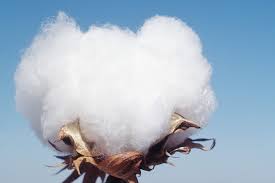
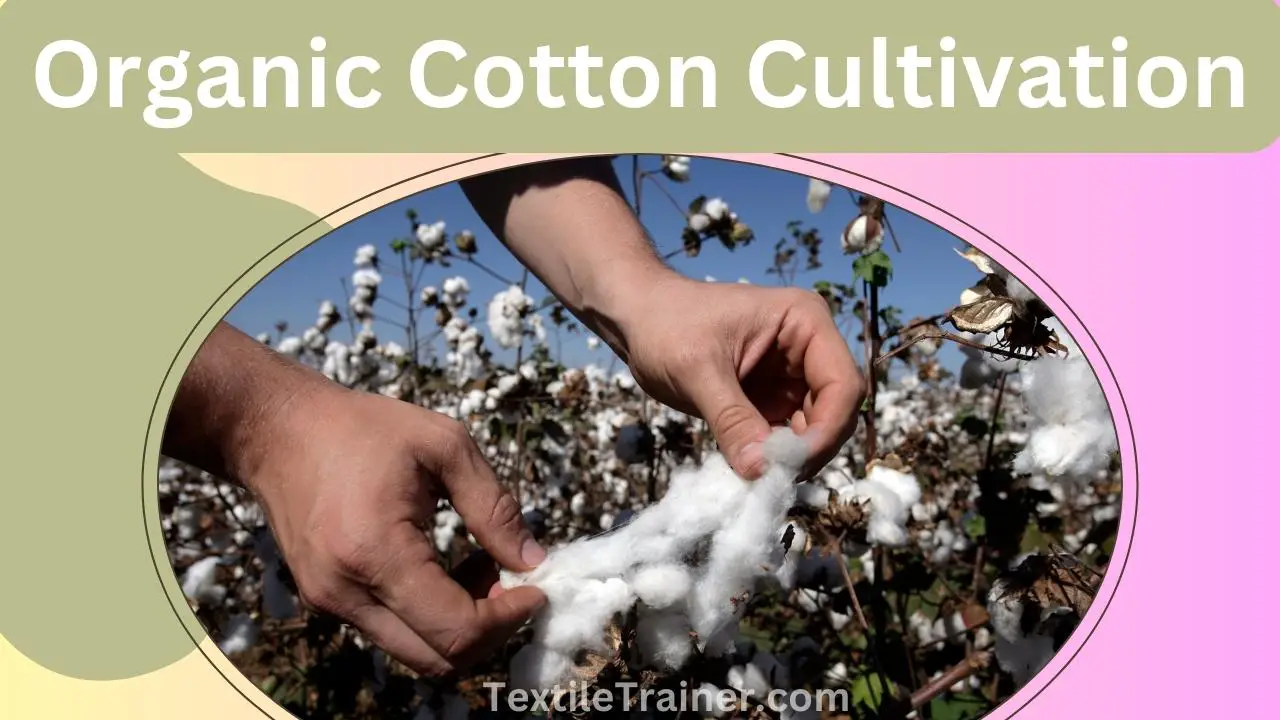






You could definitely see your skills in the work you write. The world hopes for more passionate writers like you who aren’t afraid to say how they believe. Always follow your heart.
ok. thanks.
Really enjoyed this article. Great.
Keep visit our site…
I have read some good stuff here. Certainly worth bookmarking for revisiting. I wonder how much effort you put to create such a excellent informative website.
thanks for bookmark
I am so grateful for your blog article.Really looking forward to read more. Great.
thanks too…
Say, you got a nice blog post.Thanks Again. Really Great.
thanks too…
Really enjoyed this article post. Keep writing.
keep visit.
Perfectly composed content material , thankyou for entropy.
Keep visit our site…..thanks too…..please support us.
There’s certainly a lot to know about this topic. I love all of the points you made.
keep visit our site…
I loved your blog article. Fantastic.
Thanks
Incredible points. Great arguments. Keep up the great work. Tabatha Wendall Jessa
Thanks a lot
Very neat article post.Really thank you! Really Great.
I really enjoy the article post. Will read on…
please support us….
I truly appreciate this blog.Really thank you! Fantastic.
please support us……
Very good post. Really Great.
When in doubts, travel. If you still have doubts and need an extra push, this list of amazing adventure quotes will help you get over them
Really informative blog post.Really looking forward to read more. Fantastic.
keep visit our site..
There’s certainly a lot to learn about this topic. I really like all of thepoints you made.
It’s enormous that you are getting ideas from this post as well as fromour discussion made at this time.
Your mode of describing the whole thing in this paragraph is in fact nice,every one be capable of without difficulty know it, Thanksa lot.
Im grateful for the article post.Much thanks again. Will read on…
Im thankful for the blog article. Awesome.
Thanks too…
Looking forward to reading more. Great post.Thanks Again. Cool.
keep visit our site.
Major thanks for the post. Keep writing.
I really liked your article.Really looking forward to read more. Keep writing.
Thanks a lot for the post.Really thank you! Want more.
Really appreciate you sharing this blog article.Much thanks again. Fantastic.
Thanks for the blog post.Much thanks again. Keep writing.
I am so grateful for your blog post. Awesome.
Appreciate you sharing, great article.Really looking forward to read more. Great.
Fantastic post.Thanks Again. Keep writing.
Really informative blog.Thanks Again. Want more.
I really like and appreciate your blog article.
wow, awesome blog post.Thanks Again. Really Great.
Thanks
I truly appreciate this blog.Much thanks again. Keep writing.
Thank you ever so for you article. Keep writing.
I really like and appreciate your article. Want more.
Really appreciate you sharing this article post. Really Cool.
I am so grateful for your post.Really thank you! Really Cool.
I truly appreciate this article.Thanks Again. Great.
I really enjoy the post.Really thank you! Really Cool.
Thanks again for the article.Really looking forward to read more. Will read on…
wow, awesome blog.Thanks Again. Cool.
wow, awesome post. Really Great.
I think this is a real great post.
I truly appreciate this blog post.Thanks Again. Much obliged.
Im thankful for the article.Really looking forward to read more. Want more.
Great post.Much thanks again. Really Great.
Fantastic blog article.Thanks Again. Keep writing.
Really informative post.Much thanks again. Fantastic.
I loved your article post. Will read on…
Thanks a lot for the article post.Really thank you! Much obliged.
I appreciate you sharing this blog post.Really thank you! Fantastic.
Thank you ever so for you post.Thanks Again. Really Cool.
This is one awesome blog article.Thanks Again. Awesome.
A big thank you for your article.Thanks Again. Will read on…
Thanks so much for the blog article.Thanks Again. Will read on…
Great, thanks for sharing this blog post.Really thank you! Much obliged.
Awesome article.Much thanks again. Cool.
I loved your blog.Really looking forward to read more. Really Cool.
wow, awesome blog article.Much thanks again. Want more.
Say, you got a nice blog. Want more.
Very informative post.Really thank you! Great.
I am so grateful for your blog article. Keep writing.
Im thankful for the blog article. Want more.
Thank you ever so for you article post.Really looking forward to read more. Really Cool.
Welcome
I am so grateful for your blog article.Thanks Again. Cool.
Thanks
Looking forward to reading more. Great blog article.Really looking forward to read more. Will read on…
Thanks
Im grateful for the blog post. Really Great.
I value the blog post.Really thank you!
Appreciate you sharing, great article. Will read on…
Great, thanks for sharing this article post. Really Cool.
I quite like looking through a post that will make people think. Also, thanks for allowing for me to comment.
Really informative post.Really thank you! Fantastic.
Thanks for the article post.Really looking forward to read more. Want more.
Im thankful for the blog article. Cool.
Really enjoyed this blog post.Really looking forward to read more. Awesome.
Say, you got a nice blog.Really looking forward to read more. Keep writing.
Very good blog article.Really looking forward to read more. Want more.
Thank you for your blog post.Much thanks again. Keep writing.
I truly appreciate this post.Thanks Again. Great.
Kerassentials are natural skin care products with ingredients such as vitamins and plants that help support good health and prevent the appearance of aging skin. They’re also 100% natural and safe to use. The manufacturer states that the product has no negative side effects and is safe to take on a daily basis.
I think this is a real great blog post. Keep writing.
Really informative article.Much thanks again. Want more.
Very good article post.Much thanks again. Much obliged.
Thanks again for the blog post.Much thanks again. Really Great.
Major thankies for the blog.Thanks Again. Will read on…
Very neat blog.Really looking forward to read more. Great.
Kerassentials are natural skin care products with ingredients such as vitamins and plants that help support good health and prevent the appearance of aging skin. They’re also 100% natural and safe to use. The manufacturer states that the product has no negative side effects and is safe to take on a daily basis. Kerassentials is a convenient, easy-to-use formula. https://kerassentialsbuynow.us/
Very good post.Really looking forward to read more. Great.
I really liked your article. Much obliged.
Very informative article.Really thank you! Fantastic.